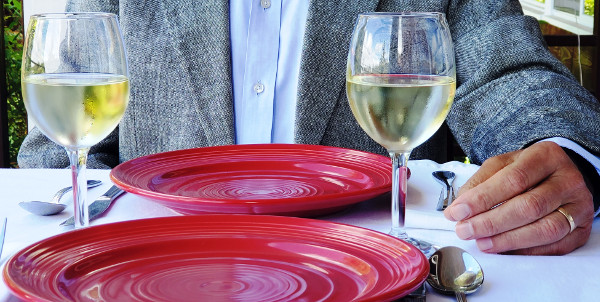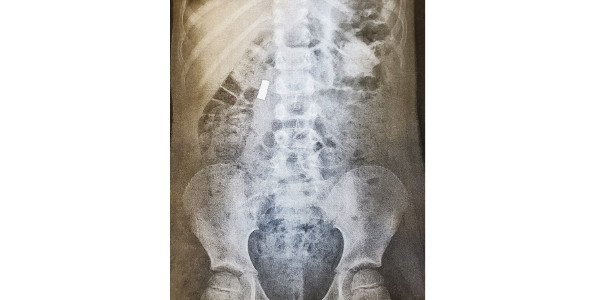Job interviews over meals
On a sunny fall afternoon when I was in college, I was driving out in the country. A guy about my age stood by the side of the road hitchhiking. He was wearing a coat and tie, with some sort of folder under his arm. I picked him up. After some preliminary chatting I gently asked him what he was doing hitching in a coat and tie—this was the late 60’s, after all.
He said he was heading home after a job interview, which had been conducted at a restaurant. I asked him how it went. “Well,” he said, “it seemed like it went well. I thought I really connected with the boss. But when we shook hands after the meal he told me I didn’t get the job. I was really surprised. I asked him why. He said it was because I had salted my soup without tasting it first. I was stunned. I told him that I like my food quite salty, and know from experience that restaurant soup is always under-salted. ‘That doesn’t matter’, the boss said, ‘you prejudged the soup. You should have tasted it first. I don’t want employees who prejudge anything’.”
* * *
During a spell when I became disillusioned with my drug company job, I considered a return to academia. Thus, I applied for an assistant professor position at the University of Pittsburgh School of Medicine. The interviews went well, and culminated in a lunch in the medical center’s Board Room with the chief of gastroenterology and a member of the board. The board member enthusiastically talked up both the medical school and the city of Pittsburgh. He said that he was a Pittsburgher born and bred; he extolled the many virtues of his fair city. Then he idly asked where I was born. “Actually,” I said modestly, “I was born in Pittsburgh.” His face lit up—it was clear that the job was mine for the taking. “So which hospital were you born in?”, he asked. I told him Montefiore, which happened to be the hospital where we were eating lunch. His jaw dropped. “Do you realize,” he said, “that this board room used to be Labor and Delivery? You were born in this very room!” It took me a while to chew on this startling piece of information. In retrospect, I should have said, “Oh, that’s why it looks sort of familiar!”
What an eerie experience it was to be in the precise location where I began my extrauterine life. Despite the considerable attraction of returning to my earliest roots, I decided not to take the job.
* * *
I was having dinner with a pharmacologist in Wilmington, Delaware. This was the result of an invitation to apply for a clinical research job with Zeneca Pharmaceuticals. We were sitting at a small table with low lights. After we each ordered a glass of sauvignon blanc my dinner companion began telling me some rather uninteresting pharmacology tales. I sipped my wine, and tried to track what he was saying. Then, deep into a monologue about serotonin 5-HT 1B/1D receptors, he absentmindedly reached for my wine glass, picked it up, and took a swig. I was startled, but said nothing. After placing the glass on his side of the table, he continued talking. Now I wasn’t following his pharmacology rap at all. Rather, I was trying to figure out what to do about my hijacked wine glass.
It occurred to me that the pharmacologist’s nerdy persona was just a façade. Perhaps he was actually a sophisticated job interviewer, gauging how I would react to his calculatedly boring monologue. And then how I would deal with his deliberate wine glass transgression. My thoughts travelled back to college days, when I was applying to medical school. There was a widely-spread rumor that one of the Harvard Medical School interviewers, a psychiatrist called Daniel Funkenstein, would set up uncomfortable situations to see how the interviewee would react. For example, one commonly mentioned ploy was that he’d say he was feeling hot and stuffy; would the interviewee please open the window? But the window had been nailed shut. We endlessly discussed how we’d handle it. As it turned out, my interview with Dr Funkenstein was quite benign. I was actually a little disappointed that all my preparations for the nailed window and other contingencies had been for naught.
But after a little reflection, I decided that my dinner companion was unlikely to be a pharmaceutical Dr Funkenstein—he was simply a very earnest pharmacologist. So my thoughts turned to how best to extricate myself from this awkward situation. Here were the options that came to mind: 1) I could forthrightly but politely say, “Excuse me, but I think you’ve been drinking my wine,” and point to the glass that was rightfully mine. But I certainly didn’t want to embarrass him. Especially since he would be writing a report about me to management. 2) Just let him keep drinking from my glass. But I liked the wine, and didn’t want to forgo the rest of it. And at some point he might notice his true glass, which was sitting to his right, and get flustered. 3) Try to surreptitiously recover my wine. This is what I ultimately decided to do. While he wasn’t paying attention, I grabbed my glass. Then, to definitively reclaim it I took a swig from the side opposite to the one from which he’d been drinking. After my sip I put it down right next to my plate, and guarded it with my elbow. It worked–the next time he reached for some wine he picked up his original glass. I kept mine very close for the rest of the meal. I’m certain he never noticed anything amiss.
I was offered the job. It had nothing to do with the sauvignon switcheroo, but I decided not to take it.


